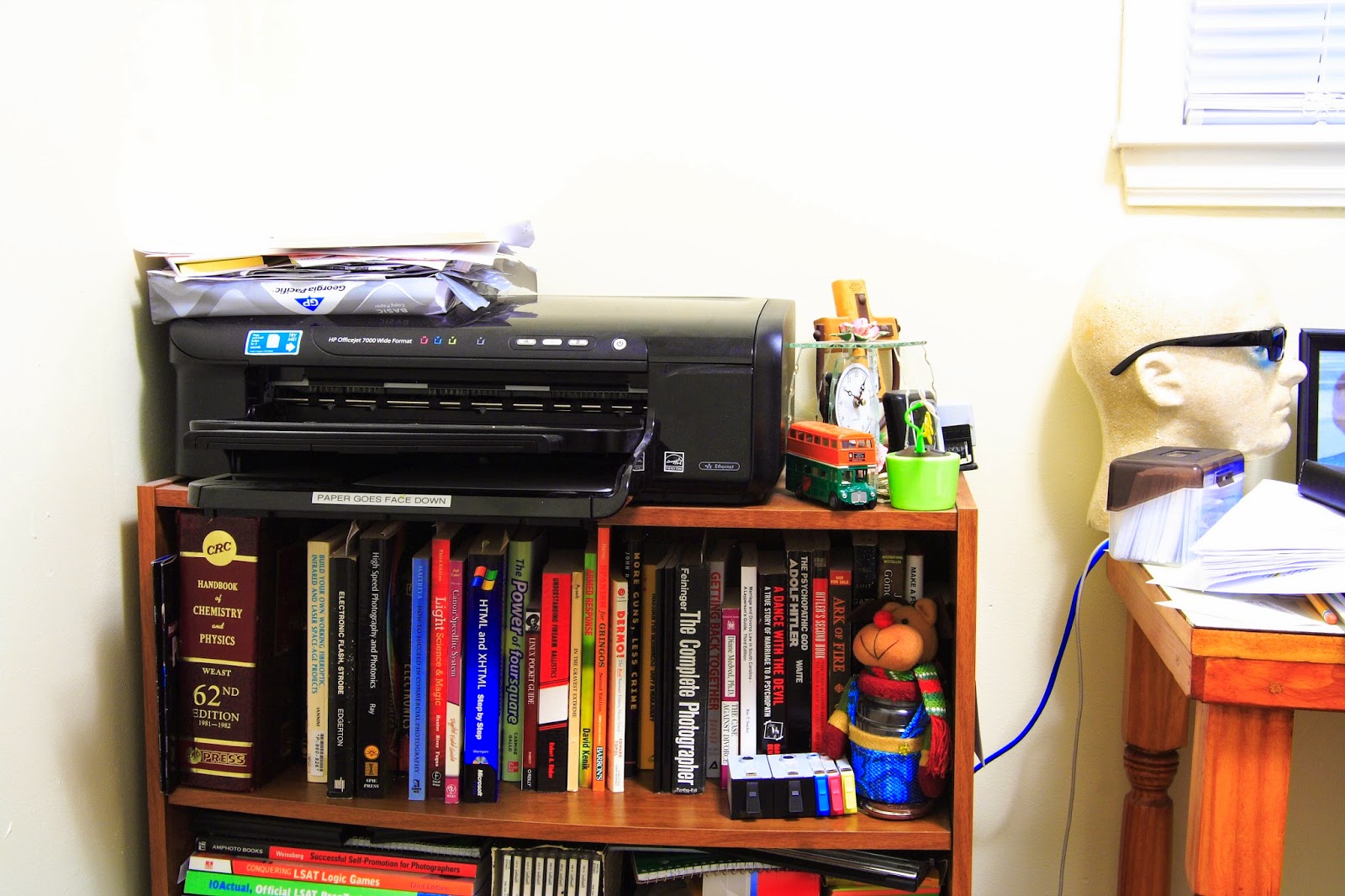Today there was a rather ridiculous assertion online made that 8 megapixel images look "fuzzy". Thus, here are two versions of the same image taken a few days ago. The subject isn't anything particularly stunning nor is the equipment. The camera is a very elderly Canon XT from 2006 coupled with an older Tamron 17-35. Even the printer in the picture isn't made any more, replaced by a wiFi model.
If the option to zoom in to 1:1 is taken, it's possible to see that there is no fuzz at all on the image. It's a pretty good image that would print to around 8 x 12 at 300dpi or at a more realistic 150dpi to 16 x 24. It's way bigger than most need to print and way bigger than is needed for online usage. It's largely why the camera has not been upgraded to one of the new 36 megapixel units. Needless to say, this image was straight from camera.
There is indeed a color cast from the compact fluorescent lamp in the office. In the following image, the image has been corrected for color cast, sharpened a little, the contrast has been tweaked. The saturation remains largely the same but the exposure has been tweaked by 2/3 of a stop. The result is quite pleasing and all the more so since it was all done with Canon's File Explorer.
Yes, the shelf is bowing under the weight of the books on the shelf - it is not a function of the lens. At 24mm there should be no distortion at all on a 17-35. The exposure was 10 seconds at f16, 100ISO.
Checking the image closely, it's possible to see what might look like halation on the printer but what that is in actual fact is dust. There's plenty dust in that office. The following is a crop from the center of the image.
Even though this is not quite at 100%, it's possible to see just how sharp the image is. The idea that 8 megapixel images are at all fuzzy is completely disproven. The color correction, sharpness etc were all adjusted slightly but not majorly. The top image was a JPEG straight from the camera. The second and third are a RAW image, created by the camera and then converted during post processing to JPEG.



No comments:
Post a Comment